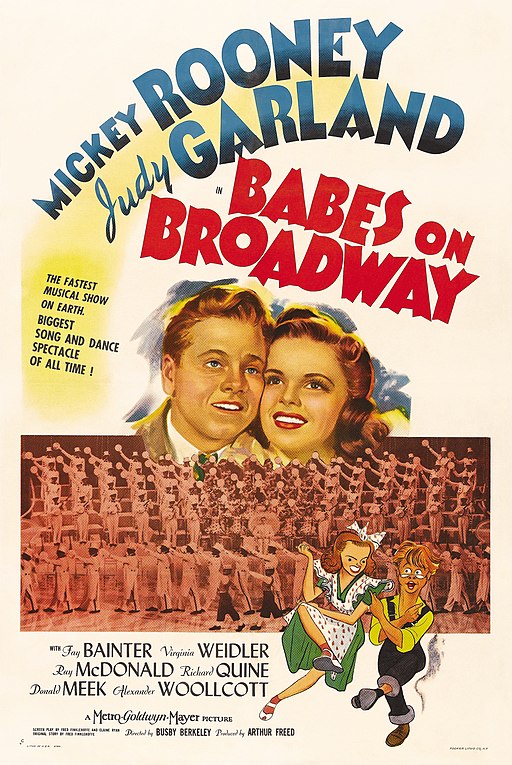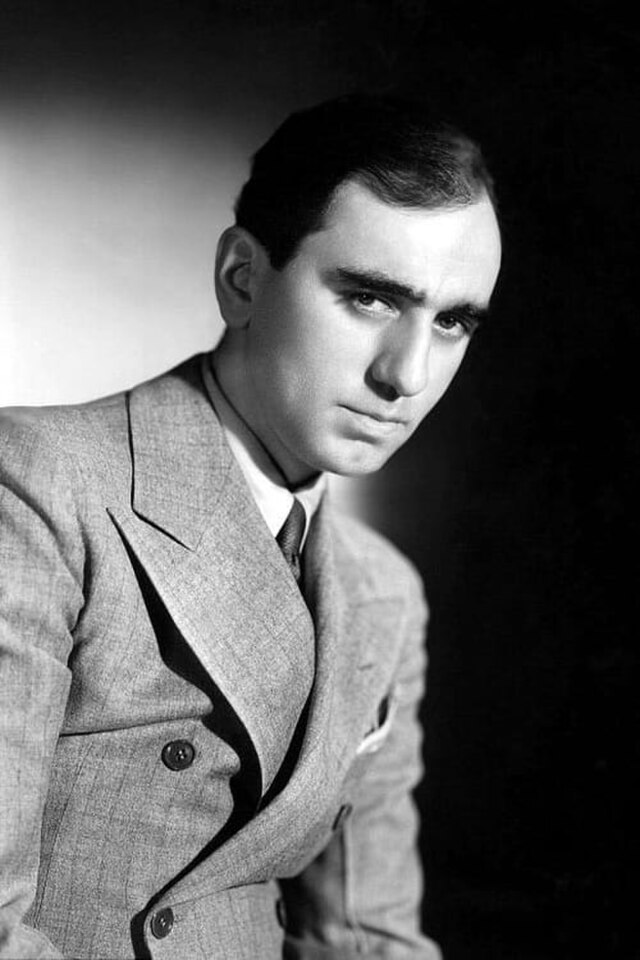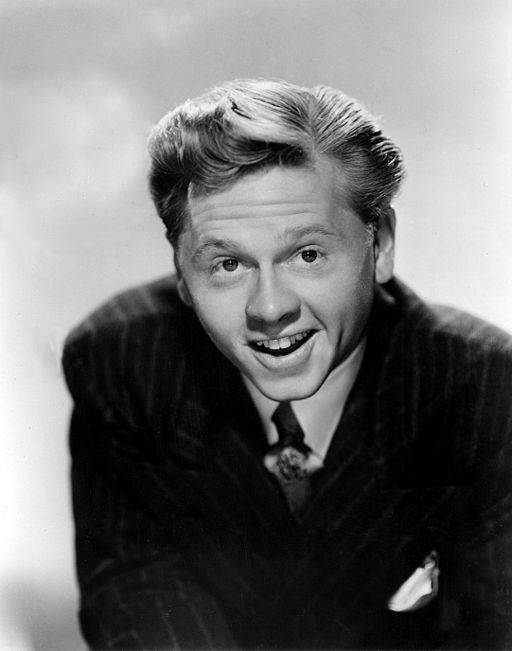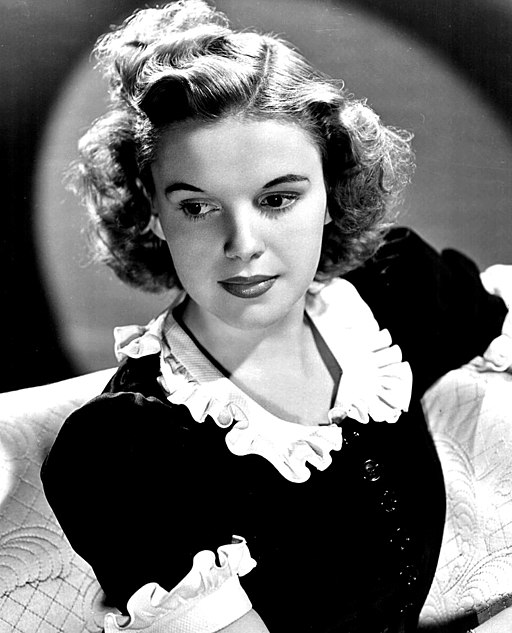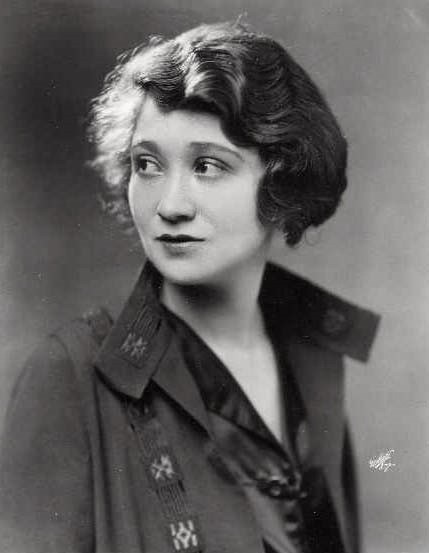Babes on Broadway - 1941
back| Released by | Metro-Goldwyn-Mayer |
| Director | Busby Berkeley |
| Producer | Arthur Freed |
| Script | Fred F. Finklehoffe, John Monks Jr. |
| Cinematography | Lester White |
| Music by | Georgie Stoll (musical director), Roger Edens (associate producer, also contributed music) |
| Running time | 118 minutes |
| Film budget | $880,000 |
| Box office sales | $3,818,000 |
| Main cast | Mickey Rooney - Judy Garland - Fay Bainter - Virginia Weidler - Ray McDonald |
Babes on Broadway
A Heartwarming Comedy in Times of War
"Babes on Broadway" is a musical film featuring a story about young performers putting on a show to help children from lower-income families.
It showcases the talents of Mickey Rooney and Judy Garland, known for their on-screen chemistry and musical performances. The film includes elaborate production numbers characteristic of Busby Berkeley's direction.
Related
Babes on Broadway – 1941
Summary:
"Babes on Broadway" is a 1941 musical film directed by Busby Berkeley and featuring the dynamic duo of Mickey Rooney and Judy Garland. The film is part of a series of "backyard musical" films made by Metro-Goldwyn-Mayer, where the storyline revolves around young and aspiring performers coming together to stage a production.
The plot centers around Tommy Williams (Mickey Rooney), a talented but struggling performer, and Penny Morris (Judy Garland), an aspiring singer and actress. Both have dreams of making it big on Broadway but find themselves facing numerous obstacles. When they meet a group of talented yet underprivileged children who could benefit from a bit of joy and support, Tommy and Penny decide to put on a show to raise funds for them.
Tommy, always full of ambitious ideas, suggests they organize a variety show featuring the best talent from their neighborhood. The film takes the audience through the preparations, rehearsals, and the eventual performance. Along the way, Tommy and Penny encounter various challenges, including financial hurdles, competition, and self-doubt.
Throughout the film, there are several elaborate musical numbers, a hallmark of Busby Berkeley's direction. These numbers are notable for their grand choreography, complex camera work, and the infectious energy of the performers. Highlights include the performances of "How About You?" and the grand finale, which showcases the cast in a patriotic medley.
In the end, the show is a success, and Tommy and Penny's efforts pay off not only in raising the necessary funds but also in bringing the community together. The film concludes on an uplifting note, emphasizing themes of perseverance, community spirit, and the joy of performing.
Analysis:
"Babes on Broadway" is a quintessential example of the "let's put on a show" subgenre that was popular during the late 1930s and early 1940s. The film's charm lies in its optimism, the charisma of its lead actors, and the impressive musical sequences orchestrated by Busby Berkeley.
Themes:
- Perseverance and Ambition: The film highlights the determination of young performers to succeed despite numerous obstacles. Tommy and Penny's journey reflects the broader American ethos of pursuing one's dreams with tenacity and hard work.
- Community and Altruism: By choosing to put on a show to help underprivileged children, the protagonists demonstrate the importance of community support and using one's talents for the greater good.
- The Joy of Performing: The film celebrates the joy and fulfillment that comes from performing. The characters' passion for singing and dancing is infectious, making the audience root for their success.
Character Dynamics:
- Tommy Williams: Played by Mickey Rooney, Tommy is the quintessential go-getter, full of ideas and determination. His character embodies youthful exuberance and a never-give-up attitude.
- Penny Morris: Judy Garland's Penny is the heart of the film. Her warmth, kindness, and incredible talent make her a natural leader among the performers. Garland's singing performances are some of the film's highlights, showcasing her exceptional vocal abilities.
- Supporting Cast: The supporting characters, including the talented children and other young performers, add depth and variety to the story. Their diverse backgrounds and individual challenges reflect the broader spectrum of society.
Musical Numbers and Choreography: Busby Berkeley's direction is most evident in the film's musical numbers. His signature style includes large-scale choreography, intricate patterns, and innovative camera angles. These sequences are visually stunning and serve to elevate the film's energy and entertainment value.
Cultural Impact: "Babes on Broadway" is a reflection of its time, offering audiences an escape from the harsh realities of the early 1940s, particularly the ongoing World War II. The film's patriotic elements, especially in the finale, resonate with the contemporary audience's sentiments, promoting unity and national pride.
Conclusion: "Babes on Broadway" remains a beloved classic due to its engaging storyline, memorable performances by Mickey Rooney and Judy Garland, and the spectacular musical numbers directed by Busby Berkeley. It is a feel-good film that continues to charm audiences with its message of hope, perseverance, and the transformative power of music and community.
Classic Trailer "Babes on Broadway":
Full Cast:
Main Cast:
- Mickey Rooney as Tommy Williams
- Judy Garland as Penny Morris
- Fay Bainter as Miss Jones
- Virginia Weidler as Barbara Josephine "Jo" Conway
- Ray McDonald as Ray Lambert
- Richard Quine as Morton Hammond
- Donald Meek as Mr. Stone
Supporting Cast:
- Alexander Woollcott as Himself
- Luis Alberni as Nick
- James Gleason as Thornton Reed
- Emma Dunn as Mrs. O'Toole
- Sara Haden as Miss Barry
- Margaret O'Brien as Little Girl in Finale
- Douglas Croft as Boy in Audience
- George P. Breakston as Harry
Additional Cast:
- Anne Rooney as Little Girl in "Hoe Down" Number
- Peter Carter as Boy in "Hoe Down" Number
- Tommy Dugan as Operator
- Leo Gorcey as Boy in Opening Scene
- Mary Ainslee as Marge Howe
- Charles Coleman as Butler
Special Appearances:
- The Our Gang Kids in various roles
Analysis of Busby Berkeley's Direction in "Babes on Broadway":
Busby Berkeley's direction in "Babes on Broadway" exemplifies his unique and influential style, which has left an indelible mark on the musical film genre. Known for his innovative choreography and elaborate musical numbers, Berkeley's direction in this film combines visual spectacle with emotional storytelling, creating a memorable cinematic experience.
Visual Style and Choreography: Berkeley's signature style is immediately recognizable in the film's musical sequences. His use of geometric patterns, intricate formations, and synchronized movement transforms the musical numbers into visual masterpieces. In "Babes on Broadway," these elements are particularly evident in large-scale dance routines and the grand finale. Berkeley's ability to choreograph large groups of dancers with precision creates a sense of unity and harmony, making the performances captivating and dynamic.
Innovative Camera Work: One of Berkeley's most notable contributions to film direction is his innovative camera work. He employs techniques such as overhead shots, kaleidoscopic effects, and fluid camera movements to enhance the visual impact of musical numbers. In "Babes on Broadway," the camera often moves in harmony with the dancers, creating a sense of immersion and drawing the audience into the performance. This approach not only showcases the choreography but also adds a layer of complexity and sophistication to the film's visual narrative.
Narrative Integration: Berkeley's direction skillfully integrates musical numbers into the broader narrative of the film. Unlike some musicals where songs can feel disconnected from the story, "Babes on Broadway" uses its musical sequences to advance the plot and develop characters. For instance, the rehearsals and performances within the film reflect the characters' journey, their struggles, and their growth. Berkeley ensures that each musical number serves a purpose, whether it is to highlight a character's emotional state, illustrate their ambitions, or foster a sense of community.
Energy and Enthusiasm: The energy and enthusiasm that Berkeley brings to the film are palpable. His direction captures the youthful exuberance and optimistic spirit of the characters, particularly in the performances of Mickey Rooney and Judy Garland. The musical numbers are infused with a sense of joy and vitality, which is contagious and leaves a lasting impression on the audience. Berkeley's ability to maintain a high level of energy throughout the film keeps viewers engaged and entertained from start to finish.
Collaborative Effort: Berkeley's direction is also notable for its collaborative nature. He worked closely with choreographers, cinematographers, set designers, and costume designers to bring his vision to life. This collaborative effort is evident in the seamless integration of all elements of production, resulting in a cohesive and polished final product. The elaborate sets, vibrant costumes, and synchronized choreography all contribute to the film's overall aesthetic and success.
Patriotic and Inspirational Themes: In "Babes on Broadway," Berkeley effectively incorporates patriotic and inspirational themes, resonating with the contemporary audience of the early 1940s. The film's finale, which includes a patriotic medley, reflects the national sentiment during World War II and serves to uplift and inspire. Berkeley's direction ensures that these themes are conveyed powerfully through both the narrative and the musical performances, adding depth and relevance to the film.
Conclusion: Busby Berkeley's direction in "Babes on Broadway" showcases his exceptional talent for creating visually stunning and emotionally engaging musical films. His innovative choreography, dynamic camera work, and ability to integrate musical numbers into the narrative make the film a standout in the genre. Berkeley's direction not only entertains but also inspires, leaving a lasting legacy in the world of cinema.
Analysis of Judy Garland's Performance in "Babes on Broadway":
Judy Garland's performance in "Babes on Broadway" is a testament to her exceptional talent and versatility as an actress and singer. Her portrayal of Penny Morris is imbued with warmth, charisma, and emotional depth, making her one of the most memorable elements of the film.
Vocal Talent: Garland's singing is, as always, a highlight of her performance. Her vocal talent is showcased in several musical numbers, most notably in the song "How About You?" Her voice is clear, powerful, and full of emotion, effortlessly conveying the character's aspirations and inner feelings. Garland's ability to infuse her singing with genuine emotion helps to create a strong connection with the audience, making her musical performances truly captivating.
Emotional Range: Garland demonstrates a remarkable emotional range in her portrayal of Penny. She navigates the character's journey with nuance, capturing the excitement, determination, and occasional moments of doubt that Penny experiences. Whether she is buoyantly optimistic about the show or dealing with setbacks, Garland's performance remains authentic and relatable. This emotional depth adds layers to her character, making Penny more than just a typical "showbiz" hopeful.
On-Screen Chemistry: Garland's chemistry with Mickey Rooney, who plays Tommy Williams, is another standout aspect of her performance. The two actors had worked together on several films prior to "Babes on Broadway," and their established rapport translates beautifully on screen. Their interactions are natural and engaging, whether they are performing a duet or engaging in a heartfelt conversation. This chemistry not only enhances their individual performances but also strengthens the overall narrative of the film.
Dance and Movement: While Garland is primarily celebrated for her singing, her dance and movement skills are also noteworthy in this film. Under Busby Berkeley's direction, the musical numbers require precise choreography and fluid movement, both of which Garland executes with grace and enthusiasm. Her ability to perform complex dance routines while maintaining her vocal performance is a testament to her versatility as an entertainer.
Character Development: Throughout the film, Garland effectively conveys Penny's growth from a hopeful performer to a confident and determined individual. Her portrayal captures the character's development, making her journey believable and inspiring. Garland's performance highlights Penny's resilience and optimism, which are central themes of the film.
Screen Presence: Judy Garland's screen presence is undeniable. She has a magnetic quality that draws the audience's attention in every scene she is in. Her expressive eyes, radiant smile, and natural charm make her performance both compelling and endearing. Garland's ability to command the screen ensures that Penny Morris is a character who leaves a lasting impression.
Impact on the Film: Garland's performance is integral to the film's success. Her talent and charisma elevate the material, turning what could be a standard musical into a memorable and emotionally resonant film. Her ability to convey the themes of hope, perseverance, and community through her performance aligns perfectly with the film's message, making her an essential part of its appeal.
Conclusion: In "Babes on Broadway," Judy Garland delivers a performance that showcases her extraordinary range as a performer. Her singing, emotional depth, on-screen chemistry with Mickey Rooney, and overall screen presence make her portrayal of Penny Morris both memorable and impactful. Garland's performance not only enhances the film but also solidifies her status as one of the most talented and beloved entertainers of her time.
Notable Film Lines from “Babes on Broadway”:
· Tommy Williams (Mickey Rooney):
"We've got the talent, we've got the heart, and we've got the drive. All we need is a chance to show what we can do."
· Penny Morris (Judy Garland):
"If we work together, we can make something really special happen. Something that will make people smile and forget their troubles, even if just for a little while."
· Miss Jones (Fay Bainter):
"Helping others is the greatest gift we can give. It's not just about the money we raise, but the hope we inspire."
· Ray Lambert (Ray McDonald):
"Showbiz isn't just about being in the spotlight. It's about the magic we create together, behind the scenes and on stage."
· Mr. Stone (Donald Meek):
"In times like these, the world needs a little more laughter, a bit more music, and a lot more heart."
· Penny Morris:
"We can't let fear hold us back. If we want to make our dreams come true, we have to take risks and put ourselves out there."
· Tommy Williams:
"The stage is our canvas, and each performance is a chance to paint a new picture, to tell a new story."
· Miss Jones:
"Believing in yourself is the first step to success. The second step is believing in each other."
· Penny Morris:
"Every song, every dance, every smile – it all matters. It all makes a difference."
· Tommy Williams:
"This show isn't just for us. It's for everyone who needs a little hope, a little joy. Let's give them something to believe in."
Classic Scenes from the Movie:
"How About You?" Duet:
One of the most iconic scenes in "Babes on Broadway" is the charming duet between Judy Garland and Mickey Rooney, "How About You?". This song showcases their exceptional chemistry and vocal talents. The playful and flirtatious interaction between their characters, Penny Morris and Tommy Williams, makes this number a delightful and unforgettable highlight of the film. Their performance captures the youthful exuberance and budding romance that is central to the film's story.
Rehearsal Montage:
The rehearsal montage is a classic example of the "let's put on a show" spirit that defines the movie. In this sequence, the young performers, led by Tommy and Penny, come together to prepare for their big show. The montage captures the energy, hard work, and camaraderie of the group as they practice their routines and overcome various challenges. This scene is infused with optimism and determination, reflecting the film's overall theme of perseverance.
"Hoe Down" Number:
The "Hoe Down" musical number is a vibrant and energetic scene that showcases Busby Berkeley's signature choreography. This sequence features elaborate dance routines and synchronized movements, with the performers dressed in colorful costumes. The precision and creativity of Berkeley's direction are on full display, making this one of the film's most visually stunning and entertaining moments.
Patriotic Finale:
The grand finale of "Babes on Broadway" is a patriotic medley that highlights the film's wartime context. In this scene, the cast performs a series of patriotic songs, complete with elaborate sets and costumes that celebrate American pride and unity. Judy Garland's rendition of "America (My Country, 'Tis of Thee)" is particularly moving, and the entire sequence serves as a rousing and inspirational conclusion to the film. The finale reflects the contemporary sentiments of World War II, emphasizing themes of national pride and solidarity.
Miss Jones' Encouragement:
A poignant and heartwarming scene involves Miss Jones (played by Fay Bainter) offering words of encouragement to the young performers. Her speech about the importance of helping others and believing in oneself resonates deeply with the characters and the audience. This moment underscores the film's message about the power of community and the impact of kindness and support.
Tommy's Big Idea:
Early in the film, Tommy Williams pitches his big idea to put on a show to help underprivileged children. This scene sets the stage for the entire plot and captures Tommy's enthusiasm and visionary spirit. Mickey Rooney's dynamic performance in this scene establishes his character's drive and determination, which are central to the film's narrative.
Barbara Jo's Audition:
Virginia Weidler, as Barbara Josephine "Jo" Conway, delivers a standout performance during her audition scene. Her character's spunky personality and talent shine through as she impresses the group with her singing and dancing abilities. This scene adds depth to the ensemble cast and highlights the diverse talents of the young performers.
Recognition for Babes on Broadway:
While "Babes on Broadway" itself did not garner major award nominations or wins, the individuals involved in the film have received numerous accolades throughout their careers. For instance:
- Judy Garland received a Juvenile Award from the Academy of Motion Picture Arts and Sciences in 1940, the year before "Babes on Broadway" was released, for her outstanding performance as a screen juvenile.
- Mickey Rooney was awarded a Juvenile Award by the Academy of Motion Picture Arts and Sciences in 1939 for his significant contribution to screen entertainment.
- Busby Berkeley was known for his groundbreaking work in musical films and has been recognized for his contributions to the genre, although he never won an Academy Award.
Legacy:
While "Babes on Broadway" might not have received formal awards, its legacy endures as part of the golden era of Hollywood musicals. The film is remembered for its vibrant musical numbers, the chemistry between Garland and Rooney, and Berkeley's innovative direction. It is celebrated as a quintessential example of the "let's put on a show" musical, contributing to the careers of its stars and the musical film genre as a whole.

